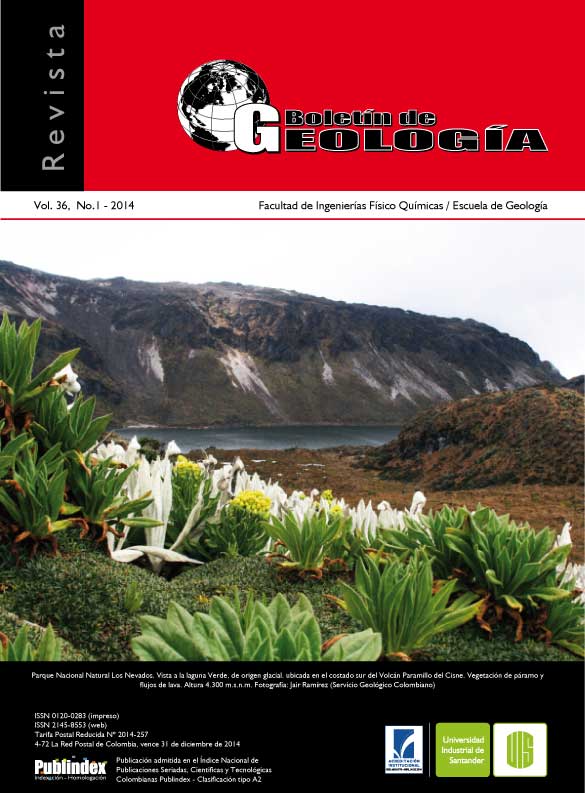Published 2014-05-22
Keywords
- Petrography,
- Geochemistry,
- metamorphism,
- Nechi Gneiss
How to Cite
Abstract
The Nechi’s Gneiss outcrops within the Tahami terrain to the west of the Otu-Pericos fault, and It’s located in the San Lucas range. It extends from El Porvenir, in the southern part, as a band of 35 Km length by 10 Km wide, to the Mejico’s town in the northern part. It is composed by quartzfeldespathic gneisses and granofels with amphibole and biotite, in some areas, these rocks present igneous aspect from their protolith and sectors with gneissic structure with granular bands interspersed with gneissic bands. The subsequent regional metamorphic reached low amphibole facies, is represented by quartz-plagioclase-biotite- epidote- titanite association, and the inherited igneous minerals from protolith are: hornblende, quartz, orthoclase, plagioclase. Inside the unit, milky quartz veins with gold and polysulphures mineralizations, and pegmatites dikes of quartz and plagioclase are observed. The majors oxides chemistry and traces elements, place these rocks among of the high in K calc-alkaline series, which are formed from an intermediate igneous protolith, located in the TAS diagram in the tonalities and diorites fields. The traces elements and rare earth elements behaviour suggests that the protolith was developed in an arc environment with enrichment in light traces elements and impoverishment of heavy traces, with affinity to magnesian magmas. The U/Pb zircons age is 277.3± 3.0 Ma (Permian), it was interpreted as the granitoide’s intrusion age. This age and the geochemistry analysis allow to suggest the existence of a plutonic arc of continental margin, related to subduction, which intruded the oldest basement that was submitted to regional metamorphism during the Triassic; affecting the whole unit, besides of giving a metamorphism age of 236.4 ± 6.6 Ma, similar to Cajamarca Complex.
